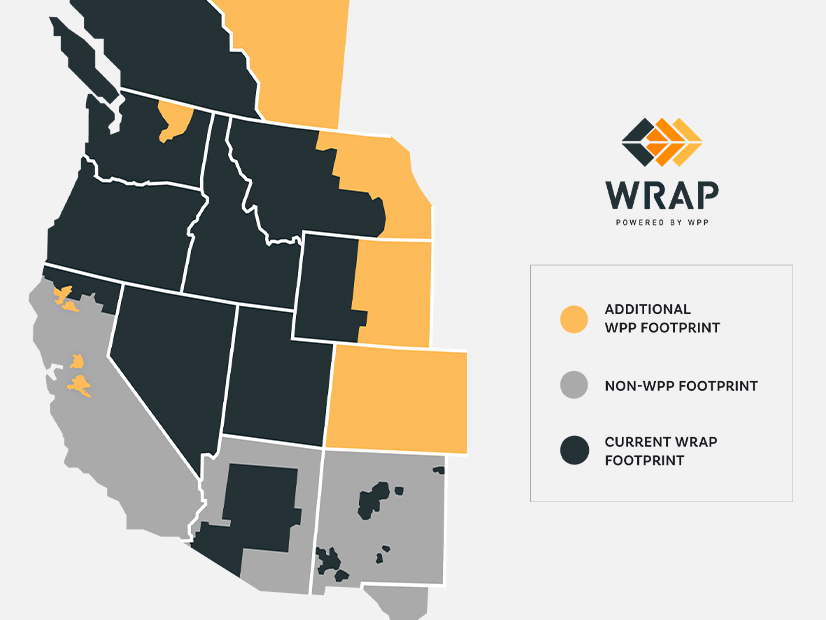
FERC on June 7 approved tariff revisions by Berkshire Hathaway Energy subsidiaries PacifiCorp, Nevada Power and Sierra Pacific Power that will enable the utilities to earn market-based rates when participating in the Western Resource Adequacy Program (WRAP).
As noted in the commission’s order (ER24-851), the Western Power Pool’s (WPP) WRAP does not intend to be a centralized market for capacity or energy, but rather a voluntary planning and compliance framework for resource adequacy that facilitates the ability of participants to meet capacity shortfalls through bilateral transactions.
“As proposed, transactions in the [WRAP’s] Operations Program (notably the energy deployment and its associated total settlement price) would be market-based rate transactions conducted under existing authorities and frameworks on a bilateral basis between participants,” the commission wrote.
The WPP’s initial plan was to avoid requiring WRAP participants to file individual market-based rate filings and instead rely on a structure of indexed-based prices to settle the bilateral transactions, contending the system would prevent the exercise of market power among participants.
Despite that measure, FERC was concerned some participants still would be transacting in balancing authority areas (BAAs) in which they had been found to exercise market power, and that existing market-based rate requirements imposed on individual participants still would apply.
“With regard to the price index component of WRAP’s structure, the commission found that the Western Power Pool’s proposal was ‘not sufficient to demonstrate that a price index may be used by specific participants that lack market-based rate authority or are subject to market-based rate mitigation,’ as it failed to address whether the proposed index-based price was a just and reasonable rate for such participants,” FERC noted.
But recognizing that existing restrictions on market-based rate authority (MBRA) could impede a participant’s ability to transact at WRAP tariff-specified rates, the commission said such a participant could submit a Federal Power Act Section 205 filing “to seek new market-based rate authorization with appropriate mitigation or propose to amend its current market-based rate tariff to include tailored mitigation for the commission to consider.”
No Market Power
In their Section 205 filings, the utilities pointed out they lack MBRA in their own BAAs, as well as in some first-tier — or interconnected — BAAs.
“They note, however, that the WRAP tariff obliges them to deliver physical power to a neighbor in need, which could be to a balancing authority area where their market-based rate authority is mitigated. They assert that complying with the WRAP tariff could cause them to exceed the authority in their market-based rate tariffs,” the commission wrote.
The three utilities proposed to rely on the liquid hubs specified by the WRAP: Mid-C in Washington and Palo Verde in Arizona. The utilities contended they would not set the market price for any transactions in the WRAP and would be price takers, with all sales settled at the price index for each region.
“Applicants argue that allowing them to amend their market-based rate tariffs to use index prices when selling to counter-parties under the WRAP tariff would be just and reasonable under Order No. 697, where the commission stated it would allow mitigated sellers to use an index or locational marginal price proxy ‘on a case-by-case basis based on their individual circumstances’ rather than defaulting to cost-based rates,” FERC wrote.
The utilities also argued that Mid-C and Palo Verde meet the commission’s liquidity requirements for use in jurisdictional tariffs.
“PacifiCorp states that it routinely makes sales at both the Mid-C and Palo Verde hubs and has engaged in sales of millions of megawatt-hours at both the Mid-C and Palo Verde hubs since 2019. Nevada Power and Sierra Pacific did not make any representations about their sales at either the Mid-C or Palo Verde hubs,” but they did note they trade more frequently at the Mead hub in Nevada, FERC said.
PacifiCorp said it trades only lightly at Palo Verde and, while trading more heavily at Mid-C, it does not report its transactions at either hub to price indexers and therefore could not influence the WRAP settlement price at either hub.
The commission clarified that its acceptance of the changes to the market-based rate tariffs for the utilities is limited to WRAP transactions and predicated on program provisions that restrict the potential for the exercise of market power.
“As applicants note, under the WRAP design, when load-responsible entities choose to join WRAP, once committed under the Operations Program, they are obligated to comply with its requirements, including requirements to make non-discretionary sales, or face charges for noncompliance,” the commission wrote. As such, the applicants and other participants in WRAP will have no discretion as to: whether to make a sale; the quantity of any sale; or the price of any sale. For any such sale, the applicants will act as a price taker and, therefore, will not know the WRAP settlement price until after the markets close.”
But the commission also required the utilities to include in their triennial market power updates to details about their “transactions at or near the Palo Verde and Mid-C hubs, relative to the total volume of transactions at the Palo Verde and Mid-C hubs, respectively, to allow the commission to evaluate the applicants’ sales contribution to index formation.”


